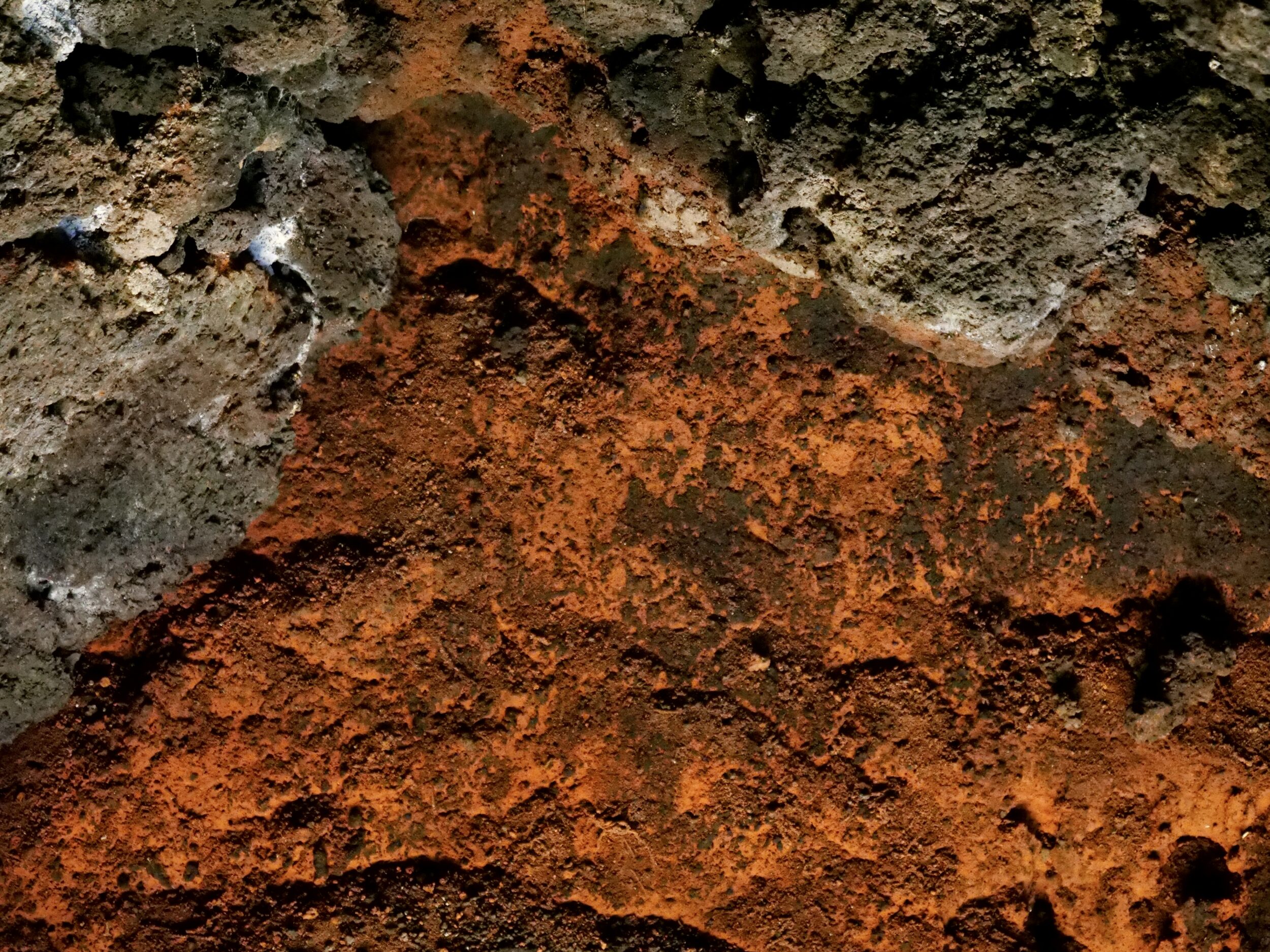This post’s location is the same as yesterday’s, except that it is looking at a different section of the same winery cellar’s largely “lava rock” wall.
I think that the only human activity which could have given rise to the pictured “splash of colour” is the excavation that created or reshaped the cellar’s walls. (the cellar may or may not be a reshaping of a pre-existing cave)
Thus, newly-exposed to air, iron-rich sections of long-buried lava (from one of Mt Etna’s many eruptions) would begin to oxidise.
Guess why the long-exposed surface of Western Australia’s iron-rich Pilbara region is so very red?
Looking, as I took the photo at 1.18 pm on 02 October 2023, I thought I had probably worked out what was going on.
Now, I am not convinced that my assumption was correct.
Fungi – yeasts, most obviously – often thrive in caves and cellars; makers and marketers of wines that are “wild-fermented” and/or “natural” are acutely aware of this fact.
Many (all?) fungi require iron.
In any event, not a few fungi are red or red-ish.
Perhaps, the questions are:
(a) “is the vivid splash of colour in this photo simply the result of iron’s oxidation?”
or
(b) “are we looking at red fungi?”
The answers are not necessarily mutually exclusive:
The correct answer could be “(a)”, or “(b)”, or “(a) + (b)”….or something else, entirely.
